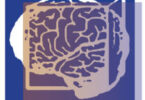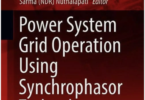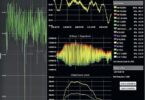by Fred Steinhauser, OMICRON electronics GmbH, Austria
The recent viral news about ChatGPT have put Artificial Intelligence into the public focus. And there is more to AI than just cheating at trivial exams.

Around the year 2000, when I started to attend conferences about electrical power systems, there were two topics that had a considerable share of the papers: the application of the wavelet transforms and of neural networks for power systems protection.
As far as I know, none of the two made it into mainstream products, they ran dry silently. Most likely it was not the right time or the resources in the embedded systems were not capable of running this appropriately. We could call it a hype that went nowhere.
Now, ChatGPT made it into the news and created an AI hype. There is plenty of hope that AI will deliver things that were hard or even impossible to achieve without it. By the way: can anyone remember Fuzzy Logic? It once fostered hope to less capable engineers to master challenging control problems. Fuzzy Logic is still a thing, but it is not a silver bullet. So, what should we realistically expect from AI?
I asked ChatGPT to write this column about AI. Don’t worry, what you read here is not what ChatGPT delivered. But I could have used it, the output was somehow reasonable, although it sounded a bit uninspired – obviously an output of a machine.
Sometimes the lack of substance was filled by verbosity, something we also observe with humans. And ChatGPT does not write texts with something to read between the lines.
As with any hype, after the peak of inflated expectations, the trough of disillusionment will follow. We better prepare for this to not become too depressed. But I strongly believe that there will be something that lasts. AI will further improve and tackle new challenges. The mentioned neural networks live on as parts of AI algorithms. But other than 20 years ago, the preconditions have changed. There is an abundance of storage capacity providing access to an enormous knowledge base and the cloud provides vast amounts of computing power.
AI is so strong because it can oversee a huge knowledge base and draw conclusions from it. It sets existing knowledge sensibly into context.
The potential applications are endless. Wherever we have no real formula to calculate a result or where more influencing factors than a human can oversee have an effect, AI could deliver a useful answer. The precondition is relevant prior knowledge and a trained AI that has learned it.
Building on this prior knowledge, AI reproduces, albeit admittedly in a very smart way. But it does not go beyond the existing knowledge.
And here we can ask ourselves what intelligence actually is. To me, it is the ability to discover new insights based on prior knowledge and findings. And I think, at least for now, this creative act is the essence of human intelligence.
I would not be too concerned about students cheating at exams by using AI. There will be AI detecting the work of AI. And if homework can be done by ChatGPT, teachers should ask themselves if they restructure their questions or even better teach something else. If a task can be accomplished by a bot like ChatGPT, it might not be performed by humans anyway in the future.
But I want to use one sentence from what ChatGPT delivered in response to my request:
In conclusion, the use of AI in the PAC industry is not a matter of if, but when.
Biography:

Fred Steinhauser studied Electrical Engineering at the Vienna University of Technology, where he obtained his diploma in 1986 and received a Dr. of Technical Sciences in 1991. He joined OMICRON and worked on several aspects of testing power system protection. Since 2000 he worked as a product manager with a focus on power utility communication. Since 2014 he is active within the Power Utility Communication business of OMICRON, focusing on Digital Substations and serving as an IEC 61850 expert. Fred is a member of WG10 in the TC57 of the IEC and contributes to IEC 61850. He is one of the main authors of the UCA Implementation Guideline for Sampled Values (9-2LE). Within TC95, he contributes to IEC 61850 related topics. As a member of CIGRÉ he is active within the scope of SC D2 and SC B5. He also contributed to the synchrophasor standard IEEE C37.118.
.







